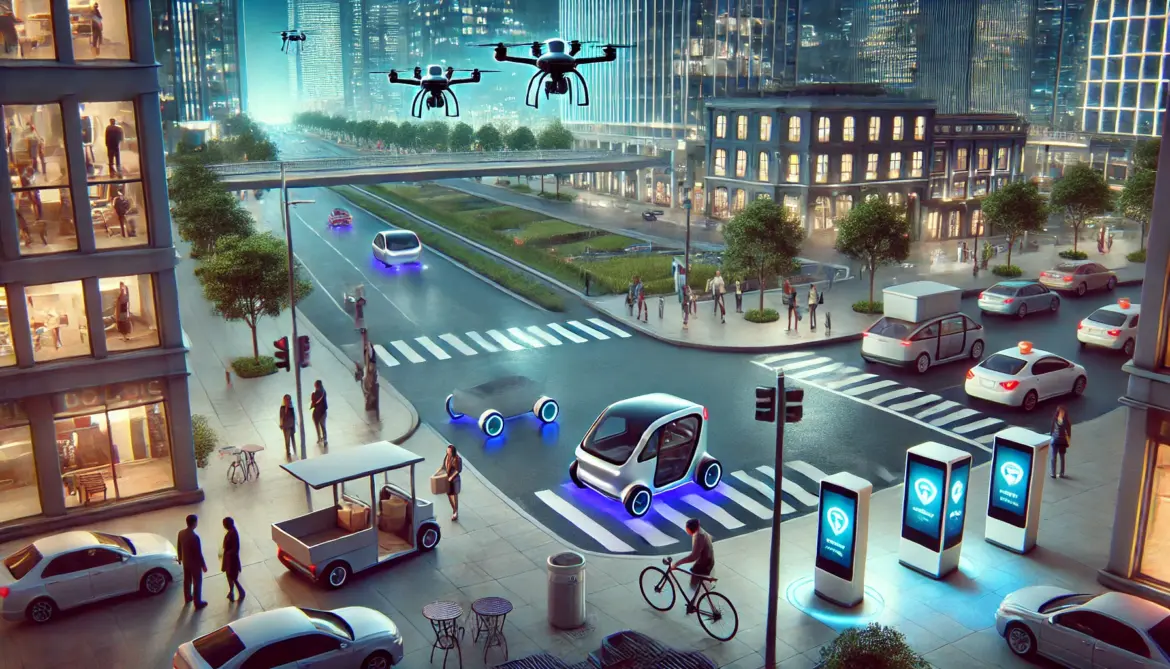How Self-Driving Machines Are Changing City Travel
Self-driving machines are changing how we get around cities. From cars that drive themselves to robots that deliver packages, these high-tech gadgets are making travel more productive, quicker, and easier to use. But how does this affect our everyday lives? Let’s dive into how self-driving machines are causing a revolution in city travel and what this could mean for our urban areas down the road.
What Are Self-Driving Machines?
Self-operating robots are machines that work without people telling them what to do. They use tech like AI, machine learning, and sensors to understand what’s around them and decide what to do next. You might see them as cars that drive themselves robots that deliver stuff, or flying drones. As they get better, these robots are becoming a key part of how people and things move around cities.
Delivery Robots: A Fresh Approach to Getting Your Packages
One clear way self-operating robots are shaking up how we move in cities is through delivery services. In busy cities , robots now bring all sorts of things right to your door – food, groceries, and other packages.
Why are they so helpful?
- Less Traffic: Delivery robots work on sidewalks or smaller streets. This cuts down the number of cars on big roads and helps reduce traffic jams.
- Good for the Planet: A lot of these robots run on electricity. This helps create a cleaner greener world.
- Saves Money: By not needing a human driver, delivery robots can cut down costs for companies—and sometimes even lower delivery fees for customers.
Self-Driving Cars: What’s Next for Getting Around
Self-driving cars are one of the coolest new things in city travel. These cars can drive on streets, follow traffic lights, and dodge obstacles all on their own.
Here’s why driverless cars are a big deal:
- Better Safety: Self-driving cars can cut down on crashes caused by people making mistakes, like not paying attention or going too fast, which makes the roads safer for everyone.
- Less Traffic: By talking to other self-driving cars, these vehicles can help control traffic flow, reduce jams, and make commutes quicker.
- More Access: These cars give people who can’t drive—like older folks or those with disabilities—a way to get around making it easier for everyone to move.
Self-Driving Buses and Shuttles: A Big Change in Public Transit
Self-driving buses and shuttles are beginning to pop up in cities offering a fresh and more productive way for folks to move around. These vehicles are built to follow specific paths without needing a human behind the wheel making them perfect for spots like airports, office parks, or downtown areas.
Here’s what makes driverless public transport so great:
- 24/7 Service: Self-driving buses and shuttles can run non-stop giving people more travel choices at any time, day or night.
- Cost-Effective: These vehicles can cut down on public transit costs a lot because they don’t need a human driver.
- Friendly: Most of these vehicles use electricity, which helps lower emissions and air pollution in cities.
How Self-Driving Robots Fit Into Smart Cities
Smart cities use tech to make city life better, and self-driving robots play a big part in this change. From driverless taxis to flying delivery bots, these robots help ease traffic jams lower pollution, and offer quicker more efficient services.
In smart cities, you might see:
- Robotic Taxis: Self-driving cars that transport passengers to their destinations without needing a human driver.
- Drone Deliveries: Flying robots that deliver packages bypassing street congestion and bringing items to you quicker.
- Waste Collection Robots: Machines engineered to pick up garbage in a neater more productive way boosting trash management in city areas.
Challenges Facing Autonomous Robots
Even with their exciting potential several hurdles need to be cleared before autonomous robots can change urban transportation:
- Laws and Regulations: Governments must create clear guidelines to govern how self-driving robots should function on public streets and walkways making sure everyone stays safe.
- Job Displacement: As robots begin to handle tasks such as driving and deliveries, humans working in these fields might lose their jobs. This creates a need to provide new job training and assistance.
- Security Risks: Just like all tech, self-driving robots can fall victim to cyber attacks and breakdowns. It’s crucial to make sure these systems are safe and dependable.
What’s Next for Self-Driving Robots in Cities?
Self-driving robots are already changing city living, and they’ll play an even bigger role in the years to come. As tech gets better, we’ll see more driverless cars, delivery bots, and even new kinds of robots we haven’t thought of yet.
Down the road, these smart machines could become a huge part of our daily routines, helping make cities cleaner, safer, and more productive. From cutting down traffic jams to lowering carbon pollution, these robots might shake up how we get around in cities.
